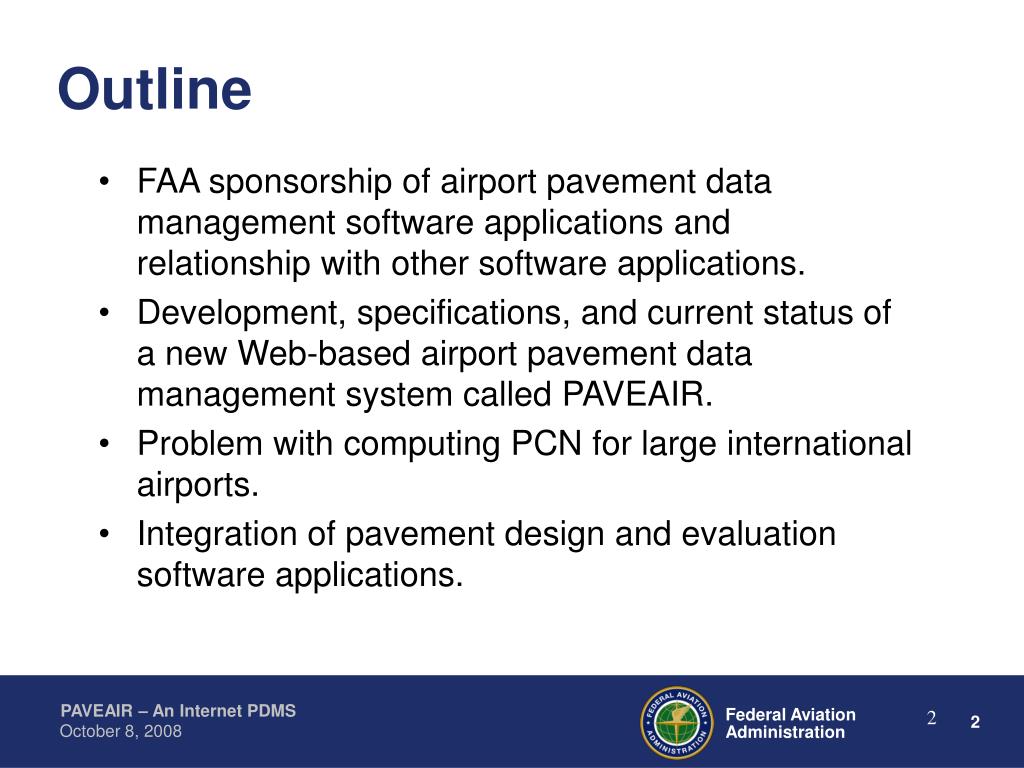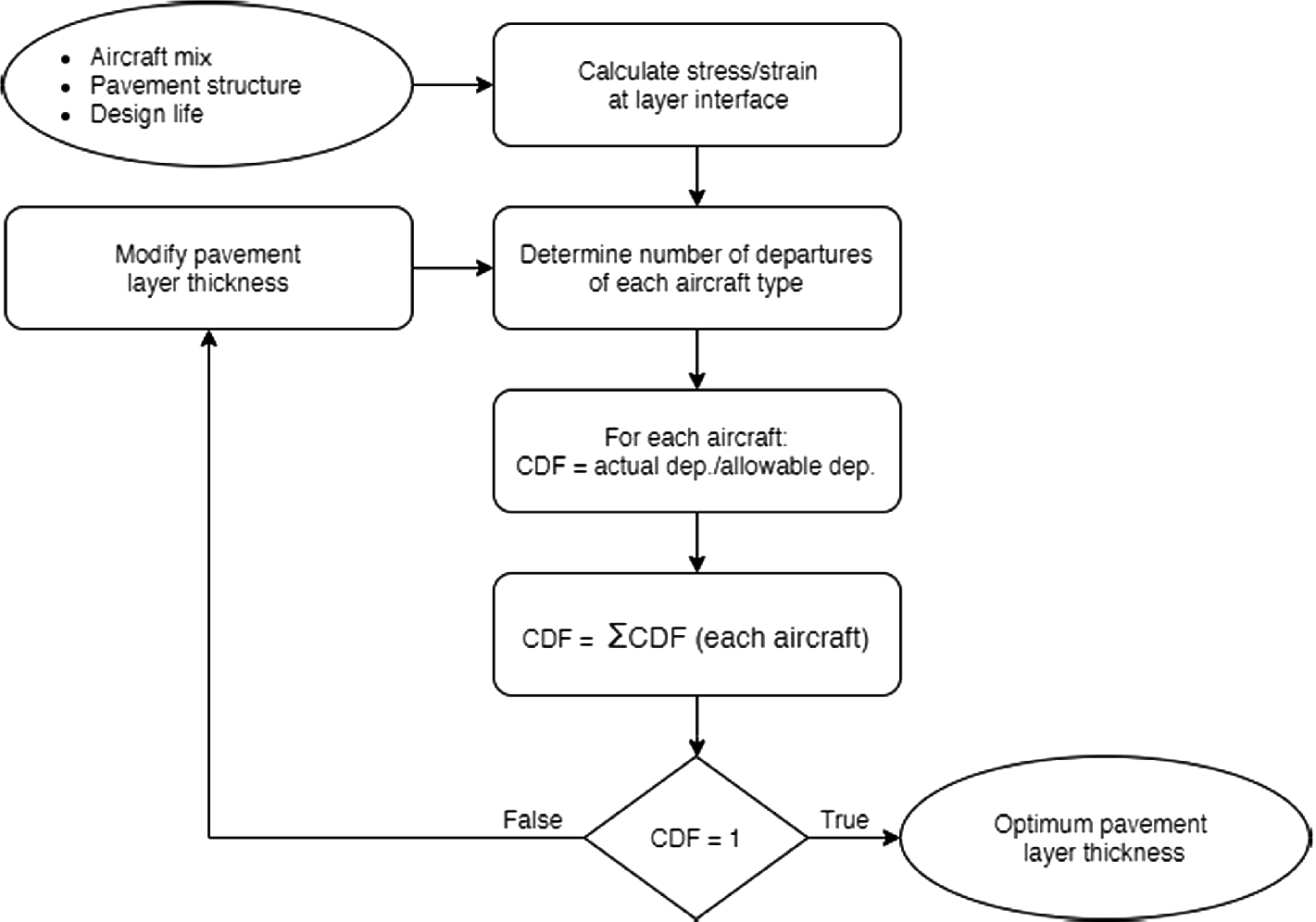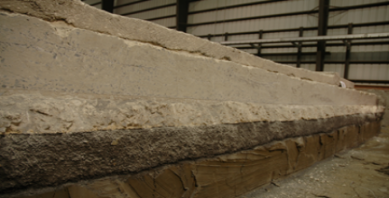

The rigid pavement tests were completed in December 2004, but post-traffic investigations and analysis of the data took another 18 months. (Change 3 to AC 150/5320-6D made LEDFAA 1.3 an alternative to the design nomographs for all traffic mixes, not just those involving 6-wheel gears.) However, upgrading of the rigid pavement models had to wait for completion of the rigid pavement full-scale tests at the NAPTF.
FAA PAVEMENT DESIGN SOFTWARE UPDATE
Flexible pavement full-scale tests with 4- and 6-wheel gears were conducted in 19, and the results of these tests were then used to update the flexible pavement failure models in LEDFAA version 1.3, which was released in 2004. Full-scale testing of both rigid and flexible pavements was conducted at the National Airport Pavement Test Facility (NAPTF), which opened in 1999. Hughes Technical Center in Atlantic City, New Jersey, began the task of upgrading LEDFAA 1.2 and developing the FAArfield program. The FAA’s Airport Technology R&D Branch, located at the William J.

After considering a number of alternatives, it was determined that a three-dimensional finite element model (3D-FEM) would provide the best solution for design of rigid pavements and overlays. In LEDFAA 1.2, workarounds were devised to approximate the critical edge stresses in rigid pavements, but these were unsatisfactory for arbitrary gear loads. Since the critical stresses in rigid pavements generally arise at joints and slab edges, this is a significant drawback in rigid pavement design. However, the basic assumptions of LEA make it incapable of computing stresses in jointed structures.

LEDFAA’s structural model makes use of layered elastic analysis (LEA) for all types of pavement structures. Therefore, a new set of full-scale tests, involving 4- and 6-wheel gears and pavements constructed to current FAA standards, was needed. However, the failure models embedded in LEDFAA 1.2 were significantly out of date, being based on full-scale traffic tests conducted by the USACOE that ended in the early 1970’s. LEDFAA is a mechanistic-empirical design procedure in which computed responses are related to pavement life predictions through empirical failure models. The major problems with LEDFAA 1.2 fell into two areas: Failure models LEDNEW was adapted to meet FAA requirements and released as LEDFAA version 1.2 in 1995.Įven though LEDFAA 1.2 provided a short-term solution for pavement designs involving 6-wheel gears, it was recognised that a significant R&D effort was needed to develop a computer-based method that would be able to handle complex gear configurations for new large aircraft, and would fully replace the design nomographs for the existing fleet. LEDNEW, a computer-based design procedure involving layered elastic computation of stresses and strains, was originally developed by the US Army Corps of Engineers (USACOE). Fortunately, an alternative procedure was available. At the time, it was recognised that design nomographs for the unique 6-wheel gear did not exist, and moreover, that the extension of the underlying design method (in particular the CBR equation with alpha factor) to 6-wheel configurations and higher might not be correct. The FAA’s transition to computer-based design procedures has been gradual, and was originally driven by the introduction of 6-wheel aircraft gears in the 1990’s, as represented by the Boeing B777. The revised AC will make FAArfield the FAA’s standard thickness design procedure for both rigid and flexible pavements, including overlays, and will retire the FAA nomograph-based design procedures.

In addition to putting the finishing touches on the FAArfield software, the FAA is also substantially rewriting the Advisory Circular (AC) covering Airport Pavement Design and Evaluation (AC 150/5320-6D). The new program is called FAA Rigid and Flexible Iterative Elastic Layered Design, but is known by its acronym, FAArfield.
FAA PAVEMENT DESIGN SOFTWARE SOFTWARE
After a 10-year research and development effort, the Federal Aviation Administration (FAA) is set to debut a new software package for airport pavement thickness design.


 0 kommentar(er)
0 kommentar(er)
